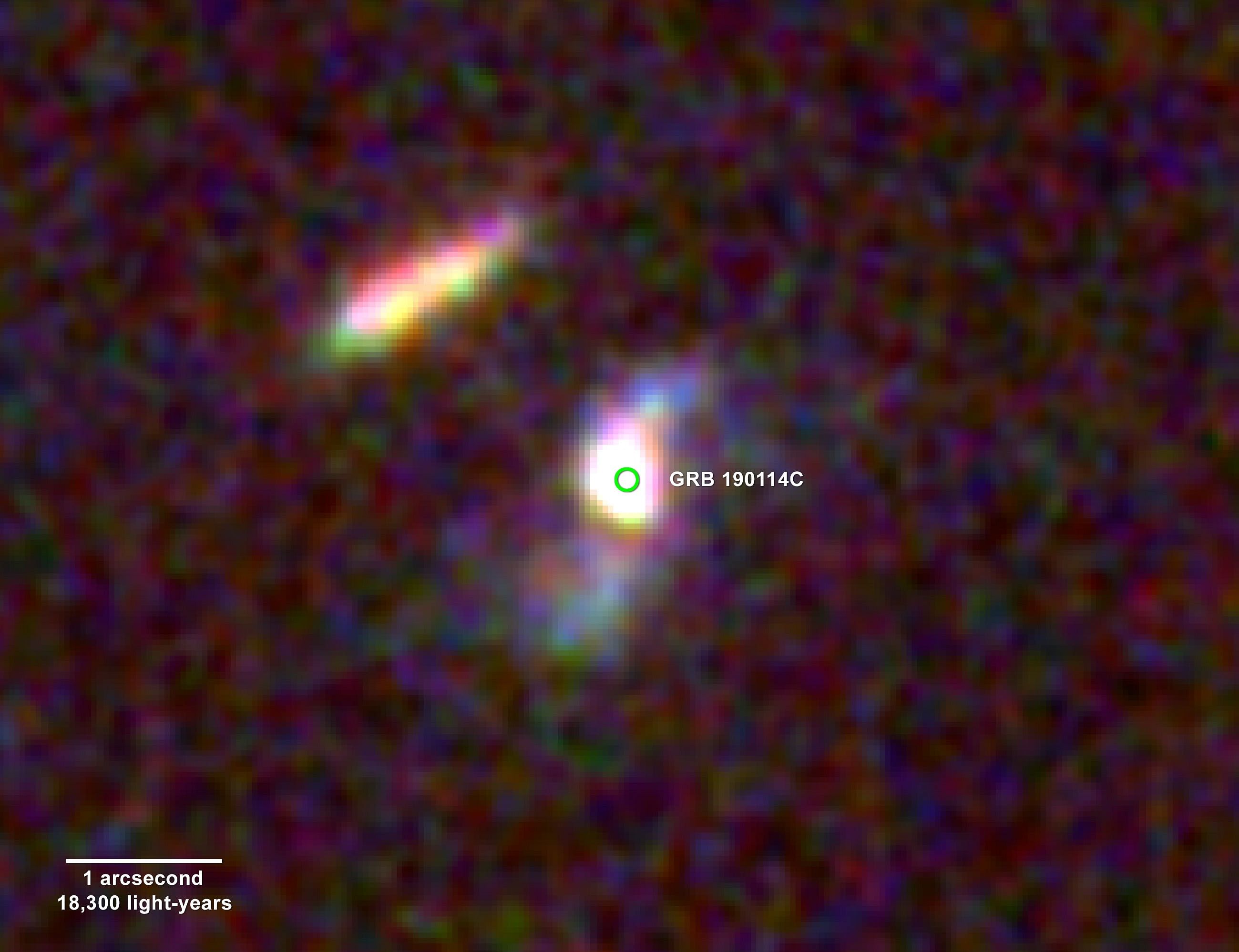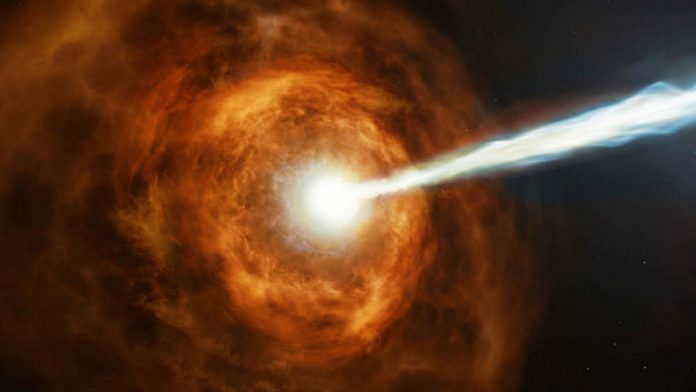Bengaluru: Astronomers have detected a pair of gamma ray bursts (GRBs) — which occur when the heaviest of stars collapse in a hyper nova, forming black holes — with more energy than ever seen before.
The observations provide insights into possibly the most powerful of all explosions in the universe.
GRBs are one of the most terrifying and least understood astronomical phenomena. The jets of gamma rays that shoot out of these explosions in specific directions travel nearly at the speed of light, but they are transient and don’t last long. Besides, they are rare.
If the Earth were to come in the path of a gamma ray, the ozone in the atmosphere would be destroyed, and oxygen near the surface would be broken apart. It is believed that one or more GRBs contributed to the Ordovician-Silurian mass extinction that occurred on Earth nearly 450 million years ago.
When gamma rays simply graze our atmosphere at these relativistic speeds, they produce a blue light called Cherenkov light. This can be observed by telescopes known as Cherenkov telescopes.
Also read: Meet Bala Iyer, theoretical physicist leading advanced gravitational-wave project for India
New findings
In the three new papers, astronomers describe two separate events observed by the High-Energy Stereoscopic System (HESS) in Namibia and the Major Atmospheric Gamma Imaging Cherenkov (MAGIC) in the Canary Islands — both Cherenkov telescopes operated by the Max Planck Society.
The first gamma ray bursts event, named GRB 180720B, was observed over a year ago, on 20 July 2018, and the second, called GRB 190114C, on 14 January this year.
Both events recorded the fastest and most energetic photons ever observed. Typically, photons have 1 electron volt of energy, but these were a trillion times stronger.

The MAGIC telescope’s readings show that energies from this year’s GRB 190114C were between 200 billion and 1,000 billion electron volts, or 0.2 to 1 teraelectron volt, making it the strongest GRB ever known. It likely originated at a distance of 4 billion light years from earth.
The first event was slightly weaker, recording energies between 100 billion and 440 billion electron volts, or 0.1 to 0.44 TeV. It also came from much farther away: 6 billion light years from earth. It lasted for 50 seconds — a long duration for a GRB. This meant that the star that died was also extremely massive.
Afterglow
Gamma ray bursts emit more energy in a few seconds than our sun would in its entire 10-billion year life. A GRB can be seen across the entire universe.
After these bursts are produced, the explosion usually retains what is called an afterglow that can be observed in other parts of the spectrum such as through X-ray telescopes.
HESS observed last year’s GRB’s afterglow ten hours after the burst occurred, a duration that has never been seen before, in high energies that have never been observed before. By contrast, the MAGIC telescope observed this year’s burst quite early, recording even higher energies.
In a process called Compton scattering, electrons that are affected by the intense magnetic fields such explosions cause, collide with photons and transfer energy to them.
The discoveries indicate that unlike previously thought, GRBs might not be that elusive after all, provided the availability of the right equipment to observe them. As we enter an era of multi-messenger astronomy, future GRBs are likely to be studied by Cherenkov telescopes along with observations by gravitational wave observatories and neutrino detectors.
Also read: Voyager 2, which entered interstellar space in 2018, sends a message for Earth




If there is a gamma ray burst in our own galaxy and the burst is pointed at earth, we are toast. The people on the side of the earth facing the GRB can expect pretty quick death. You don’t know even know you’re dying, it’s that fast. The people on the other side of earth will also die, bit, they will get some more time, enough time to know that they are dying.